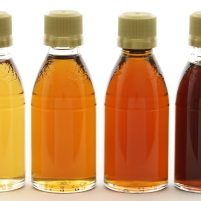The American Indians taught the Colonists how to tap the maple tree for its sap and boil it down to what the Indians called “Sweetwater.” Canada, New York and Vermont are all known for their superior maple products. Maple syrup is graded according to color and flavor. Generally, U.S. grades are: Fancy or Grade AA, a light amber colored syrup with a mild flavor; Grade A is medium amber and mellow flavored; Grade B is dark amber and hearty flavored; and Grade C is very dark with a robust, molasses like flavor. Since the processing of maple syrup is labor-intendisve, pure maple syrup is quite expensive. A less costly product is labeled maple-flavored syrup and is a combination of less expensive syrup, such as corn syrup, and a small amount of pure maple syrup. Pancake syrups are usually nothing more than corn syrup flavored with artificial maple extract. Go for broke and get the good stuff and refrigerate after opening.

Lavash? Lavosh? Either will do!
This wonderful low-carb bread that’s also known as Armenian cracker bread, is either round or rectangular that’s thin and a little crispy but soft enough to make a great, flavorful wrap sandwich. You’ll find in most Middle Eastern markets and many supermarkets as it is becoming more popular. You’ll even find at Trader Joe’s and it’s even in a wheat version. I use these for delicious turkey or beef wrap sandwiches with a flavorful mayonnaise. You can also cut up the lavosh sandwiches like little sushi rolls and secure with a toothpick and now you have a yummy little appetizer snack for your next celebration or gathering.
Pepperoncini!
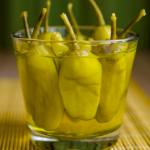 Pepperoncini – pronounced: pep-per-awn-CHEE-nee) Also called Tuscan peppers. These thin skinned bright yellow peppers are very mild and packed with little seeds. They have a slightly sweet and mild flavor and are really not that hot at all. You’ll find them usually pickled on an antipasti platter and are also served as a condiment to some sandwiches such as pastrami’s. Try them finely chopped in your next sour cream based dip.
Pepperoncini – pronounced: pep-per-awn-CHEE-nee) Also called Tuscan peppers. These thin skinned bright yellow peppers are very mild and packed with little seeds. They have a slightly sweet and mild flavor and are really not that hot at all. You’ll find them usually pickled on an antipasti platter and are also served as a condiment to some sandwiches such as pastrami’s. Try them finely chopped in your next sour cream based dip.
FEE-Loh! or Phyllo!
 Literally translated, the Greek word “Phyllo” means “leaf”. In the culinary world it refers to tissue-thin layers of pastry dough used in various Greek and Middle Eastern sweet and savory preparations. It’s best known to be used in the dessert “Baklava” and in “Spanokopita” – the mini spinach appetizers that are folded like a flag. You can find phyllo (or filo) in the frozen section in your grocery store. When frozen it can be stored up to 1 year and in the refrigerator for 1 month. Once opened, use within 2-3 days. Try to protect the delicate sheets of dough by placing a slightly damp paper towel over the unused phyllo as your assembling your dish – it tends to dry out very, very quickly and take it from me… it’s a BEAR (insert word here instead) to have phyllo become brittle when you’re trying to assemble a dish or appetizer (I have flag folded many a spanokopita in my days……)
Literally translated, the Greek word “Phyllo” means “leaf”. In the culinary world it refers to tissue-thin layers of pastry dough used in various Greek and Middle Eastern sweet and savory preparations. It’s best known to be used in the dessert “Baklava” and in “Spanokopita” – the mini spinach appetizers that are folded like a flag. You can find phyllo (or filo) in the frozen section in your grocery store. When frozen it can be stored up to 1 year and in the refrigerator for 1 month. Once opened, use within 2-3 days. Try to protect the delicate sheets of dough by placing a slightly damp paper towel over the unused phyllo as your assembling your dish – it tends to dry out very, very quickly and take it from me… it’s a BEAR (insert word here instead) to have phyllo become brittle when you’re trying to assemble a dish or appetizer (I have flag folded many a spanokopita in my days……)
Lemon Bars!
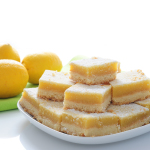 In tribute to a very special someone – today we honor the lemon bar! Well, at least I do by sharing my recipe….
In tribute to a very special someone – today we honor the lemon bar! Well, at least I do by sharing my recipe….
For a half sheet pan (13″x18’x1″), mix together 3/4 cup of sugar, 3 cups of flour and pinch of salt. Cut in 1-1/2 cups of cold butter and mix gently. Pat into the pan to form the crust. Chill for about 10-15 minutes in refrigerator, then bake at 350 for about 20 minutes until just slightly brown. While the crust is cooking, mix together 9 eggs, 4-1/2 cups sugar, 2 cups fresh lemon juice and 1-1/2 cups of flour. Whisk together well. When crust is done, cool about 3-5 minutes then add the lemon-egg mixture then bake for about 35 minutes at 350 degrees. Cool completely, maybe even overnight in refrigerator. Cut into squares and enjoy – “This one’s for you!”
Nutmeg! Use it whole and grate….
This is one of my fav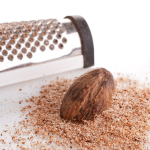 orite spices to use fresh. Supposedly Columbus was actually looking for this spice in the east indies when he sailed from Spain. This seed comes from the nutmeg tree and was extremely popular in the 15th to the 19th century. the hard, egg-shaped nutmeg seed is grayish brown and about 1 inch long. The flavor and aroma are delicately warm, spicy and sweet. It is sold ground and whole but I say purchase it whole and use a grinder as pictured or a micro-plane zester for freshly ground – it makes a big difference. It is excellent when used in baked goods, milk or cream based sauces and custards. It’s also complimentary to many vegetables like spinach, squash and potatoes! Once you use it whole, you’ll never buy the jar of ground nutmeg again.
orite spices to use fresh. Supposedly Columbus was actually looking for this spice in the east indies when he sailed from Spain. This seed comes from the nutmeg tree and was extremely popular in the 15th to the 19th century. the hard, egg-shaped nutmeg seed is grayish brown and about 1 inch long. The flavor and aroma are delicately warm, spicy and sweet. It is sold ground and whole but I say purchase it whole and use a grinder as pictured or a micro-plane zester for freshly ground – it makes a big difference. It is excellent when used in baked goods, milk or cream based sauces and custards. It’s also complimentary to many vegetables like spinach, squash and potatoes! Once you use it whole, you’ll never buy the jar of ground nutmeg again.
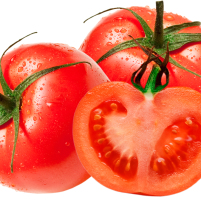
Not an apple at all!
Pomodoro! Literally translating to “golden apple”, pomodoro is Italian for “tomato” the first tomatoes in Italy were actually a yellowish color. Next time you’re at an Italian restaurant and you see “Al Pomodoro” on the menu – no, it’s not that guy you went to high school with – it means that the dish is served with tomato sauce!!!
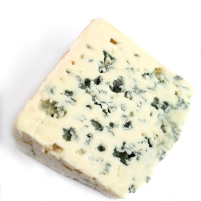
The King of Blue Cheese? Roquefort!
Roquefort is at least one of the oldest and best known in the world. This fabulous blue cheese has been enjoyed since Roman times – even Caesar was a fan! It is made from sheep’s milk that is exposed to a mold known as Penicillium roqueforti and aged for about 3 months or more in the limestone caverns of Mount Comaulou near the village of Roquefort in southwestern France. Roquefort has a creamy-rich texture and pungent, piquant, somewhat salty flavor. It has a creamy white interior with blue veins and an ivory rind. It’s sold in foil wrapped cylinders. This is a great cheese to serve at the end of the meal with a fine port or dessert wine. The MINIMUM fat content for Roquefort is 52%…. explains a lot now…..
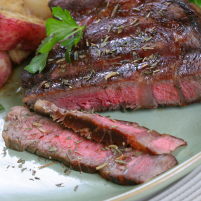
Grillin time! Ribeye!
It’s that time of year to break out the grill and slap a nice rib-eye steak down! This tender, flavorful beef steak is a boneless cut from the rib section – between the short loin and the chuck. If the bones are removed the result is the extremely tender rib-eye steak. If bones left in, then known as a rib-steak. Both should be quickly cooked by grilling, broiling or frying.
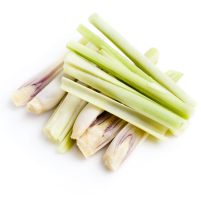
Lemongrass – You can’t smoke it!
So important in Thai and Vietnamese cooking is this herb that has long, thin, gray green leaves and a woody like scallion base. Citral, an essential oil found in lemon peel gives lemon grass its sour lemon flavor and fragrance. Available fresh or dried in Asian markets and some higher end supermarkets. Store fresh lemon grass in refrigerator , tightly wrapped in a plastic bag for up to 2 weeks. Use the white base up to where the leaves begin to branch to flavoring tea, sauces, soups and curry dishes. – Definitely discard before using as you wouldn’t want this woody thistle between your teeth or down your throat!!




